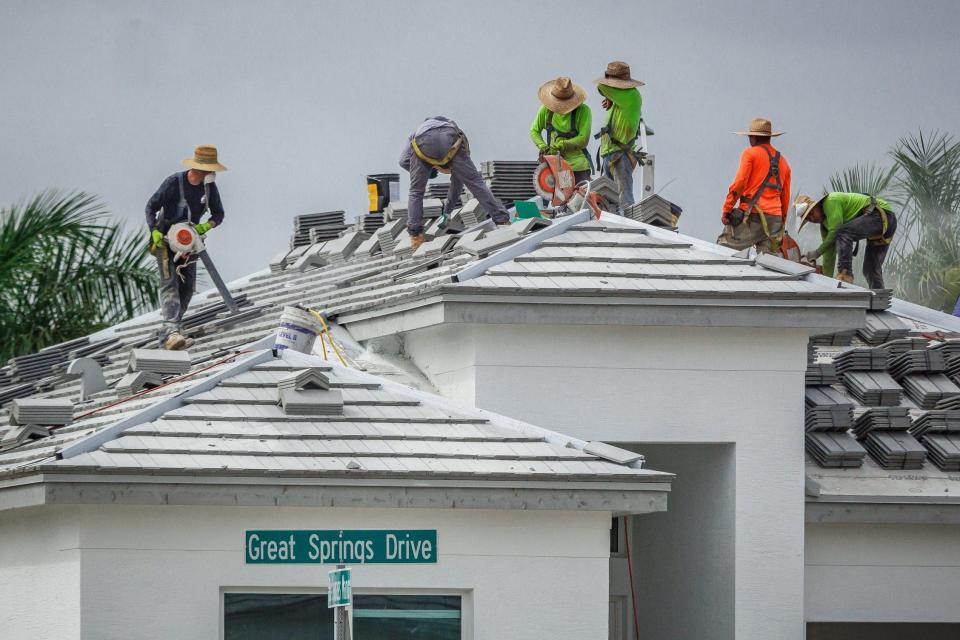Florida banning local heat protection rules allows greater role for federal government
How ironic. Florida may have opened the door to more federal oversight that could benefit agricultural and construction workers. With HB 433 now state law, the Florida Legislature and Gov. Ron DeSantis managed to appease business interests that wanted to block local government interference into their employment policies.
They succeeded in the halls of the state capitol but their efforts cleared the way for the federal Occupational Safety and Health Administration to step up monitoring and inspections to keep a key segment of Florida's workforce safe.
That may be bad news for firms like the Belle Glade-based McNeill Labor Management, which OSHA says is fighting a $27,655 fine and an order to adopt a heat-illness prevention program following a six-month investigation into the death of an agricultural employee. Unfortunately, the state's abject neglect on this issue leaves no other choice. Workplace safety rules have a purpose, particularly for businesses that either can't or worse, won't comply.

“This young man’s life ended on his first day on the job because his employer did not fulfill its duty to protect employees from heat exposure, a known and increasingly dangerous hazard,” Condell Eastmond, an OSHA area director, said in a press release. “Had McNeill Labor Management made sure its workers were given time to acclimate to working in brutally high temperatures with required rest breaks, the worker might not have suffered a fatal injury.”
The state's rollback of heat protections is part of a law that is both intentional and cruel. Given its location, Florida is consistently a warm, if not hot state, ranking at the top for annual average temperatures in several meteorological surveys. It's a little hotter in South Florida, with higher humidity prompting an unprecedented streak of heat advisories and excessive heat warnings as high temperatures and humidity created hazardous outdoor extremes.
Florida has no heat protection standard and doesn't want one
Last November, the Miami Dade Commission considered a proposal that required construction and agricultural companies with five or more employees to guarantee workers access to water and give them 10-minute breaks every two hours when the heat index exceeded 94 degrees. It also mandated firms train employees to recognize signs of heat illness, call for help and administer first aid. Enforcement ranged from warnings to $2,000 a day fine.
The county would have been the nation's first local government to adopt such requirements, but the proposal didn't get very far. The commission deferred the decision until March, which gave lobbyists for the politically connected real estate and agricultural industries time to come up with preemption bill in the state capitol.
While Florida doesn't want excessive local heat-protection regulations, the state itself doesn't have any standards when it comes to worker heat exposure. Florida officials rely on OSHA for that. So, any outdoor work conditions regarding water consumption, cooling off time and posting notices relating to heat exposure are largely left to the employees and the benevolence of their employers.
Extreme heat a concern in South Florida: Climate change triggers new Florida heat warning chart that alerts when it could be deadly outside
Unfortunately, that didn't help Salvadore Garcia Espita, a 26 year-old immigrant working on a temporary visa who fell ill and collapsed in 97-degree heat while planting sugarcane in a Loxahatchee field. He died in a local hospital three days later. McNeil Labor has not commented on the death or the OSHA investigation.
Agricultural and construction employment remain key sectors in Florida's economy. An estimated 1.5 million jobs, roughly 14 percent of all jobs in the state, are connected to agriculture, natural resources and food industries, according to Florida Chamber of Commerce data. Although a smaller industry in size, Florida's construction sector saw growth last year, and its 622,600 employees are expected to grow along with the state's population growth. Both industries depend on their outdoor labor, which often consists of xxxxxxxx
U.S., heat illness, according to OSHA, is a growing safety and health concern for workers. Environmental heat exposure claimed the lives of 36 workers in 2021 and 56 in 2020, according to federal Bureau of Labor Statistics. As temperatures continue to rise, so should OSHA's role in protecting employees in states like Florida.
Sensible guidelines to protect workers laboring outdoors in oppressive heat are a must. While many firms understand the importance of keeping their employees safe, there are those that don't. That's where government enforcement must apply. Thanks to Florida, that responsibility falls to the feds.
This article originally appeared on Palm Beach Post: Florida's lack of heat protection standards opens door for OSHA.

